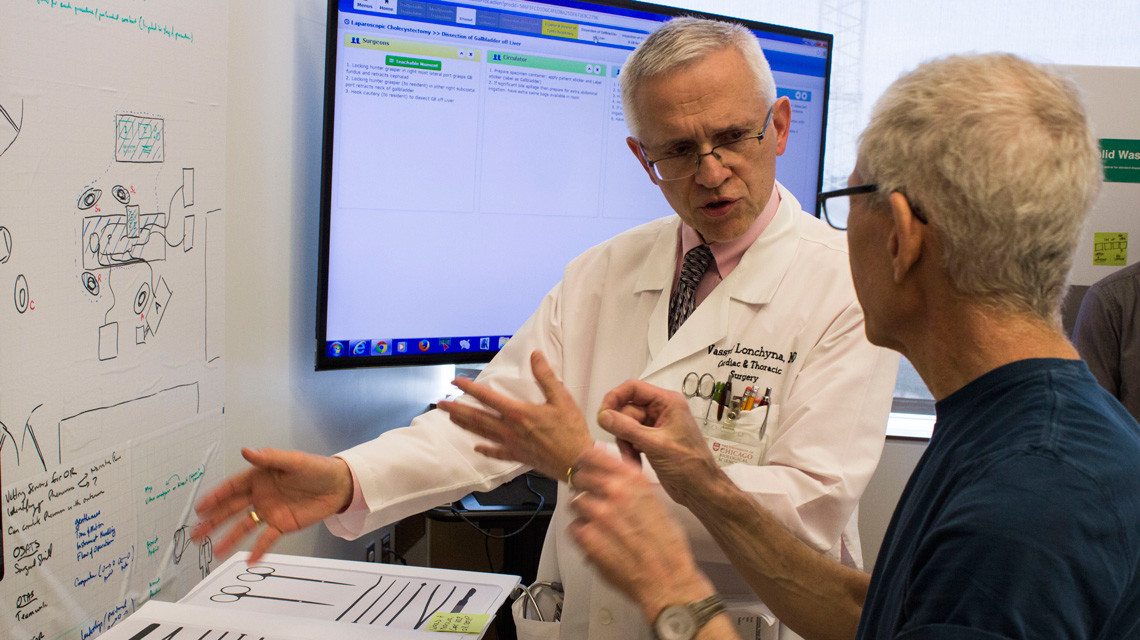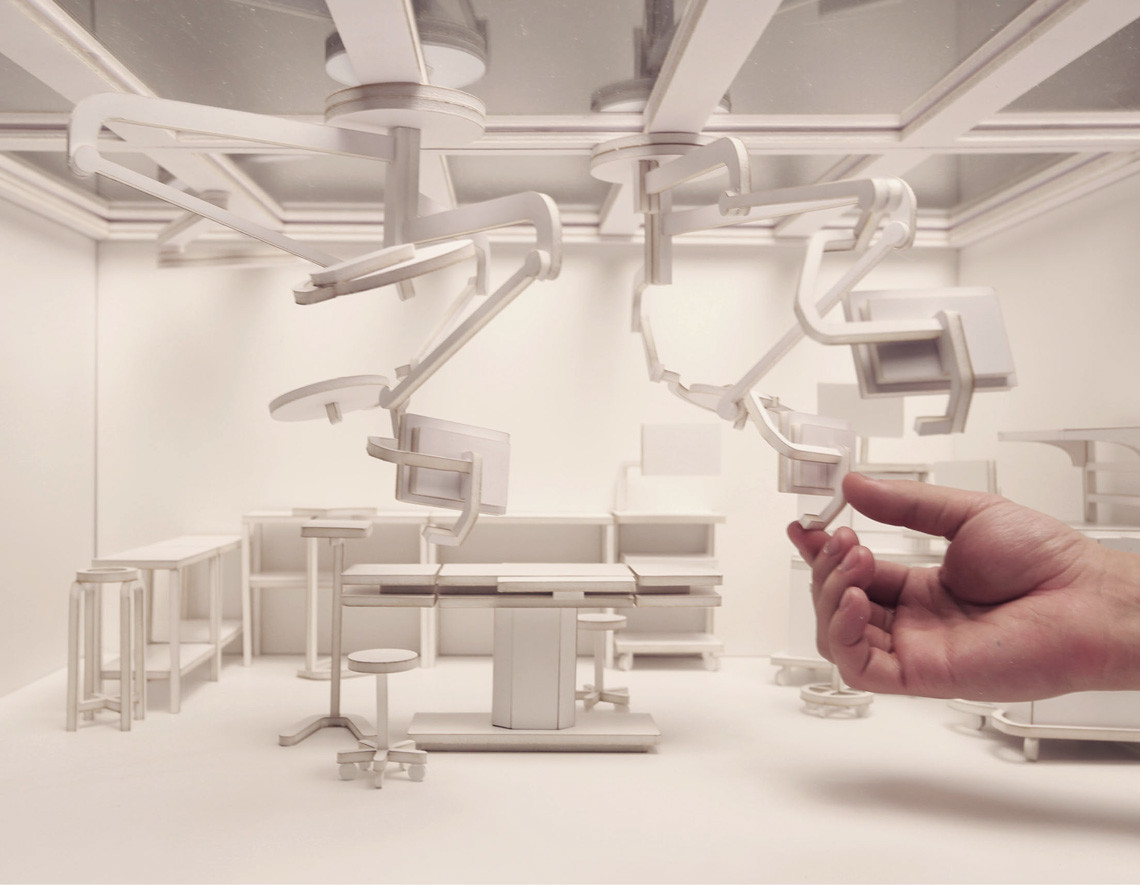

Assignment
Using research, students developed a set of design principles and a series of prototypes and user tests with doctors, nurses, and medical staff. Developing design abilities through prototyping was emphasized. Sketching, physical and digital modeling, and scenario development were required.
Synopsis
They began with on-site observational to establish project scope and a semester project plan with Dr. Alex Langerman to meet our combined objectives. They employed the user-centered process throughout the semester incorporating analogous research and early stage prototyping.
An extensive research phase was followed by the development of design principles and a series of prototypes and user tests with doctors, nurses and medical staff. Developing design abilities through prototyping were emphasized. Sketching, physical and digital modeling, and scenario development were required to complete the project.
Problem
Proposed User Experience
Bright Vision Room
What if the operating room itself could be a checklist? The Bright Vision Room turns the operating room’s floors and walls into communicators that organize the activities of the room inside and out.
OR Table Platform
This bed platform is flexible. It is changeable and adaptable depends on types of operation
or preferences of surgeons. It provides optimal operation environment. Surgeons are able to control the screens above the OR table through this control panel, so that nurses or students can see where the surgeon is indicating during a teaching moment. Also, the control panel is connect to the tool cleaning room on the basement. If surgeons ask a specific tool they need to use, through image sharing, surgeons are able to make sure the right tool is being brought up.
Central Information System
Centralizing critical information give everyone around the room a single source for shared data and is placed at the focus of activity.
Smart Table
Setting up the tools for an operation takes up valuable OR time and mastery of this process requires deep knowledge of operations and the surgeons’ preferences. We believe that the back table should go from passive furniture to active team member by aiding the scrub team throughout the operation. Active projection surface displays ideal tool layout based on operation and surgeon preference. Camera provides feedback to track tools and layouts. Tool usage and layouts will save to database for preferences and analytics.
Pluscart
Complex operations require more tools, ultimately bringing in more carts and adding complexity to the operating theater. By augmenting the standard cart with the ability to expand it’s usable surface, we can use fewer carts for more complex operation.
Backstage Elements
Backstage Elements Taking items common to all ORs– trash receptacles, sutures, personal storage– and building them into a system reduces cognitive load on staff members and introduces elements of consistency to a situation in which “every surgery is unique.”
Tags:
Faculty
Students
Hank Garrett
SeungCheol Lee
Hsin-Cheng Lin
Brian Lucas
Beth Schwindt
Evan Scott
Kaiwei Tang